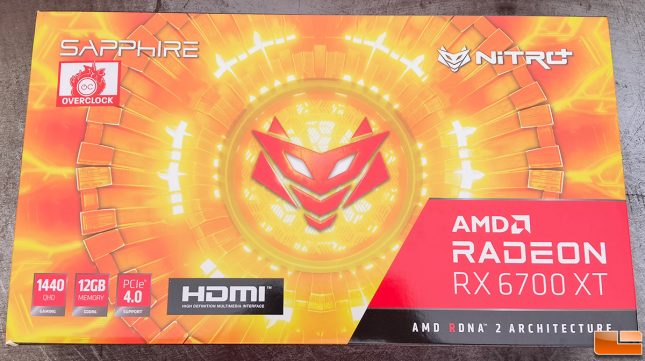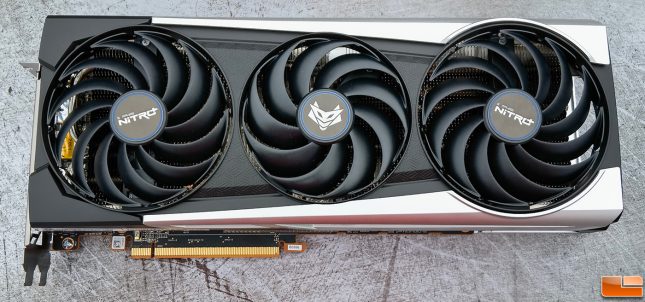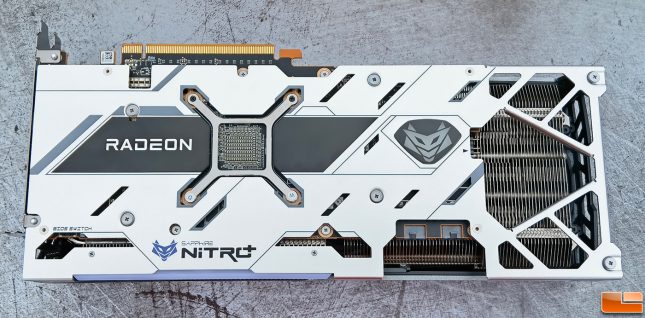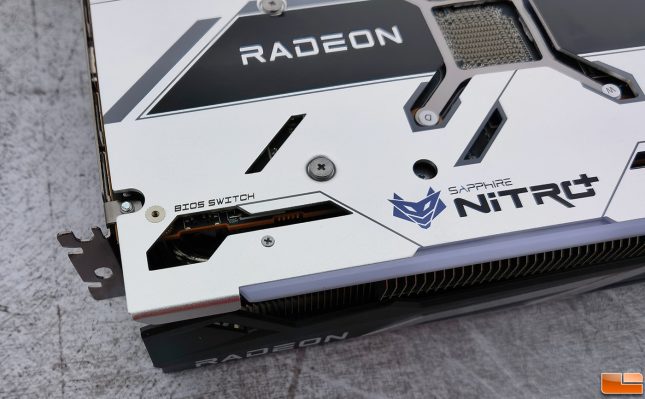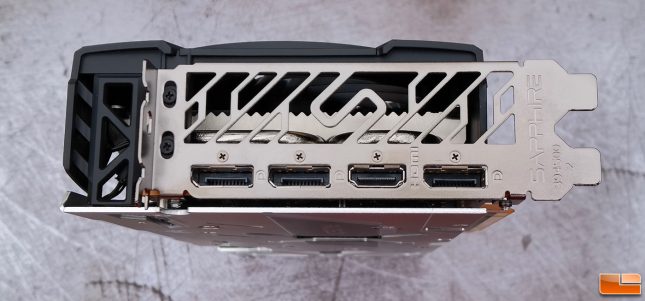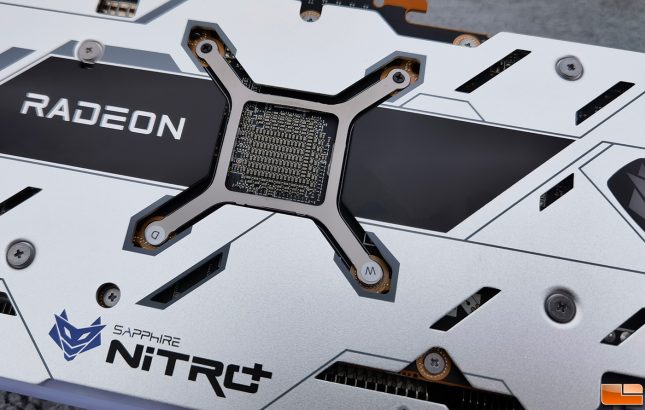Sapphire Nitro+ Radeon RX 6700 XT Gaming OC Review
Nitro+ Radeon RX 6700 XT Gets Tested
The AMD Radeon RX 6700 XT reference card delivers solid performance, but many enthusiasts and gamers like custom cards from the board partners. If a reference card registers as boring in your brain, the Sapphire Radeon RX 6700 XT Nitro+ should be anything but that. Sapphire went fully custom with this Nitro+ series cards and drastically changed the appearance, cooling solution and bumped up the clock speed!
This model comes with a 2,548 MHz game clock and a 2,622 MHz boost clock. AMD clocked their 6700 XT reference card at 2,424 MHz game clock with a 2,581 MHz boost clock. This means that Sapphire bumped up the game clock 5.1% and the boost clock speed 1.6%. AMD has done a good job pushing their clocks as high as they on reference models, but Sapphire managed to get them a little higher. You won’t see huge performance gains with the overclock, but it should be noticeable when we benchmark the cards.
The box for the Sapphire Radeon RX 6700 XT Nitro+ is about as bright and exciting as you can get. We are glad that Sapphire has gotten away from gloomy dark boxes and went with something eye catching.
Sapphire went with a triple axial fan design for the Nitro+ series. The card itself measures 310mm x 131mm x 51mm and has a silver and black color scheme. If you look at the hybrid fan blades you’ll notice that the smaller middle fan spins opposite of the two larger outer fans. This is done to improve airflow and reduce turbulence. The hybrid fan blades not only stiffen up the blades, but also improve the downward air pressure.
Looking down at the top of the 6700 XT Nitro+ card we can see that it has 8-pin and 6-pin PCIe power connectors along the top edge of the PCB. This is the same power connectors as the reference model, but Sapphire is using a beefier 11-phase digital power design for their card.
The backplate on this card looks good, but it is certainly busy looking in our opinion. There are three RGB lighting zones on this model – the light bar across the top edge, the sapphire logo on the top, and then the logo on the backplate. There is an aRGB header that is accessible from the back of the card next to the mash logo on the backplate. This is crucial for those that want to control the RGB lighting for it to be synchronized with the motherboard.
Sapphire went with dual BIOS chips on this model, which is nice in the event that one ever fails. The secondary BIOS is loaded with more relaxed frequencies for those that might want to save some power. It has the boost clock at 2615 MHz and the game clock at 2433 MHz. With these lower clocks the total graphics power is 186W, which is down from 211W. You can also switch profiles with the TRIXX app.
Along the bottom edge of the card you can see all the heatsinks being used to keep the NAVI 22 with AMD RDNA 2 architecture nice and cool. Sapphire is using K6.4 memory pads on the 12GB of GDDR6 memory to help keep them dissipate heat to the cards many heatsinks. There is even a separate heatsink for the VRM! You can tell Sapphire put time into engineering this card and cooler.
When it comes to display connectors you have one HDMI 2.1 and three DisplayPort 1.4. This is pretty much the standard set of connectors these days.
The card Sapphire Nitro+ Radeon RX 6700 XT Gaming OC looks great and has impressive features. It should as this model commands an MSRP of $729 USD. The AMD Radeon RX 6700 XT reference card is priced at $479 USD, so you are looking at a $250 price premium on this model.
Now that we have the basics covered we can dive into testing and see how it performs!

